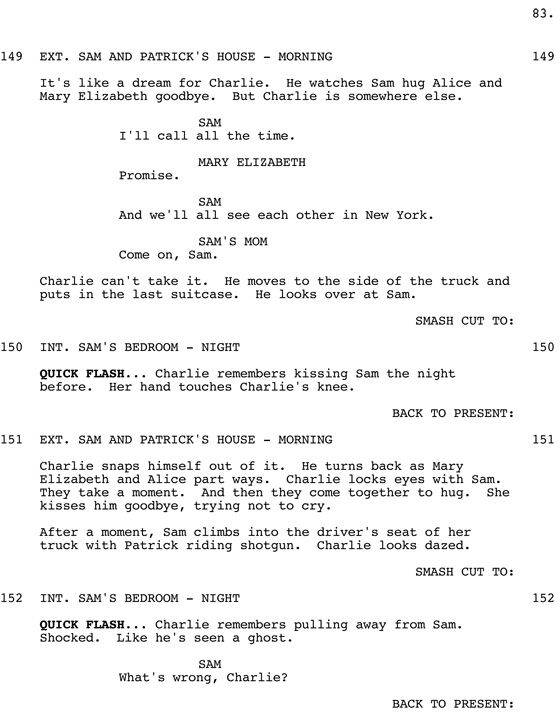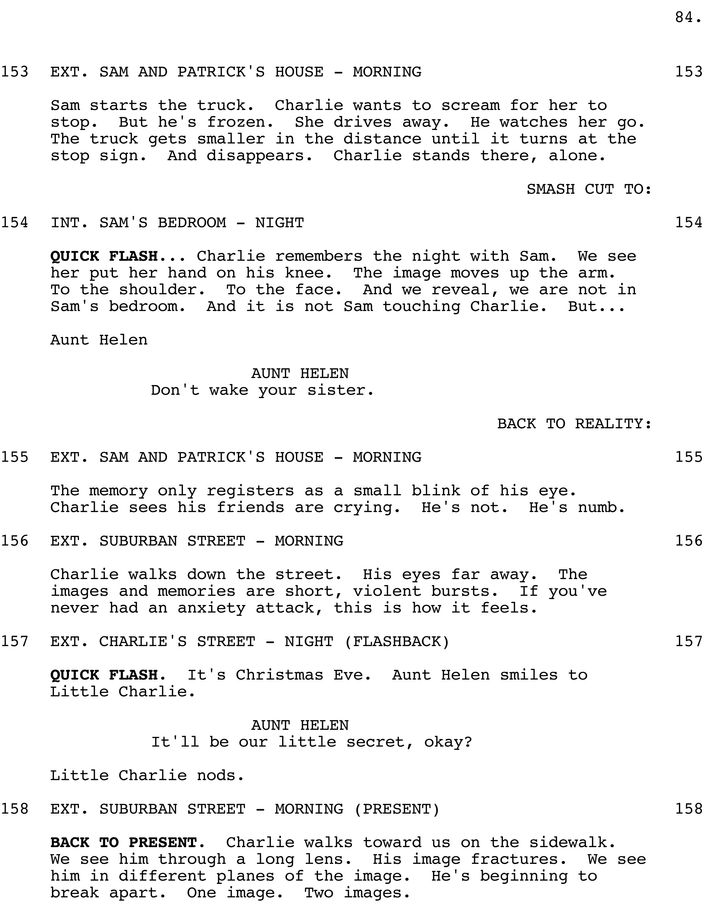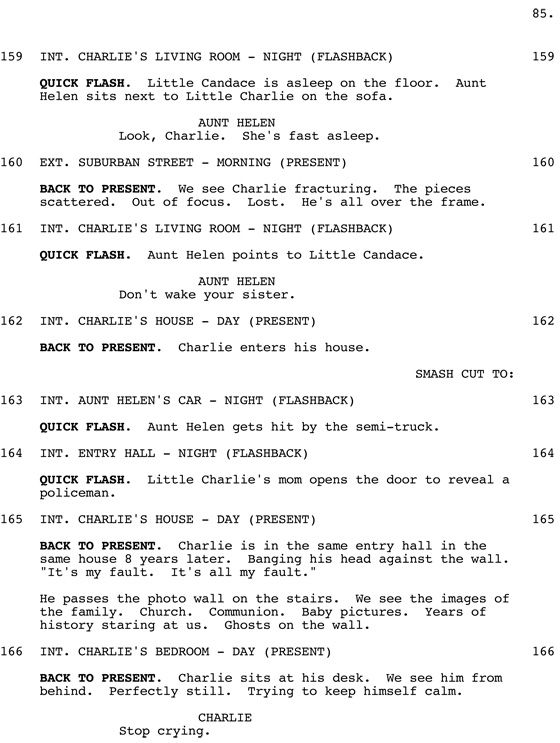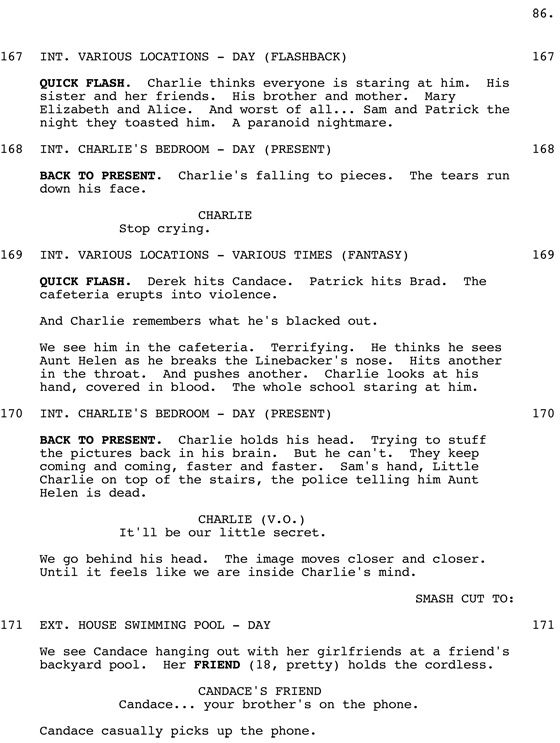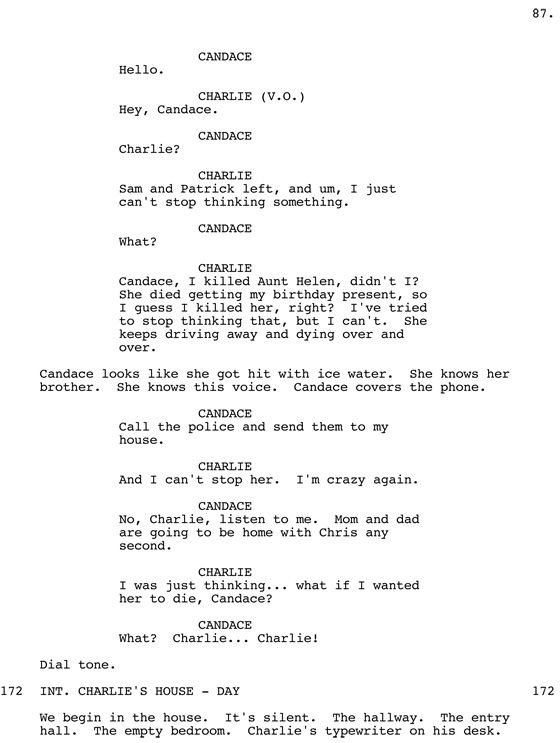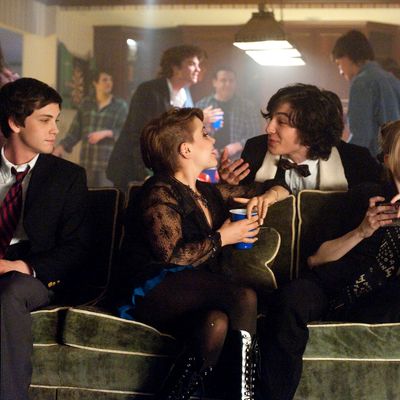
Over the last few weeks, Vulture has spoken to the screenwriters of 2012’s most notable movies about the scenes they found most difficult to crack. What pivotal sequences underwent the biggest transformations on their way from script to screen? Today, writer-director Stephen Chbosky talks about a key late scene in The Perks of Being a Wallflower, which he adapted from his own novel. What crucial change did he make in the editing room? He tells Kyle Buchanan (and beware, as SPOILERS follow):
The scene that was both hardest to crack and also had the most different versions was Charlie’s breakdown. I knew I wanted to tell an emotional story, because my novel’s an emotional story, but I also knew that since film is more visceral, there would only be so much emotional heaviness that an audience could take. What I figured out early on was if I make the audience go through what Charlie is going through as much as possible, in that if Charlie blacks out, we black out, then I can talk about every emotion I want to and not burn out the audience.
On set, once I saw Logan Lerman delivering that performance, I realized that now I had my maypole to build my scene around. You cannot underestimate how when you write, “Charlie cries” — two words on a piece of paper — it’s not the same thing as this young man delivering this moment. I had to write new dialogue when his sister is talking to him on the phone, because my lead delivered something that was better than what I’d hoped.
Once I had the footage, I thought that the big aha moment would be revealing his aunt’s death — and that’s what I was writing the screenplay to build to — but once I got the film on its feet, I realized it wasn’t enough of a payoff. We’d already guessed that’s what had happened, so instead, I put it in the middle of the movie. Now I needed a new aha moment. As I was cutting the footage, I saw that Charlie as a little boy was walking in the same room that Charlie as a grown teenager was having a breakdown in. I originally had a different plan for that footage, but when I saw it played side by side, that became my aha moment. I became interested in exploring the emotional idea of a haunted house, and it became far more powerful than even the best version of the death reveal could have been.
I have a saying: There’s a difference between filming a script and making a movie. I was not precious about cutting things for the movie, because I already had the novel exactly the way I wanted it to be. I’ll give you another example, though it has nothing to do with this scene: I had it in my mind that after they graduated, the characters would run up this hill, and there was a hill that I’d always wanted to film. I’m talking seventeen years that I wanted to film this shot! And then we were supposed to shoot it on a Monday night, and on the Friday before, we were doing a football scene, and I turned around and saw the bleachers at sunset and thought, Wow, that is a beautiful shot. And in that moment, I changed it from the hill to the bleachers, and it became one of the best images in the film. You have to listen to your intuition.
